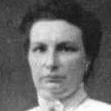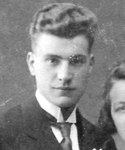Family tree Jacobs » Josephina Gerdina Pieterse (1870-1916)
Personal data Josephina Gerdina Pieterse
- She was born on August 30, 1870 in Utrecht.
- She died on October 29, 1916 in Rotterdam, she was 46 years old.Source 1
akte nr. 4988
- A child of Hendrik Pieterse and Aleida Josephina Jacobs
- This information was last updated on March 9, 2023.
Household of Josephina Gerdina Pieterse
![]() Attention: Husband (Gerrit Willem Hoogeweij) is also her cousin.
Attention: Husband (Gerrit Willem Hoogeweij) is also her cousin.
She is married to Gerrit Willem Hoogeweij.
They got married on November 29, 1893 at Kralingen, she was 23 years old.
Child(ren):
- Aleida Josephina Hoogeweij 1899-????
- Gerrit Jan Hoogeweij 1903-
- Johanna Alida Hoogeweij 1903-
- Willem Gerrit Hoogeweij 1908-
- Leendert Hoogeweij 1910-
Timeline Josephina Gerdina Pieterse
This functionality is only available in Javascript supporting browsers.
Click on the names for more info.
Symbols used:  grandparents
grandparents
 parents
parents
 brothers/sisters
brothers/sisters
 children
children
 grandparents
grandparents
 parents
parents
 brothers/sisters
brothers/sisters
 children
children
Image(s) Josephina Gerdina Pieterse
Ancestors (and descendant) of Josephina Gerdina Pieterse
Josephina Gerdina Pieterse  | |||||||||||||||||||||||||||||||||||||||||||||||||||||||||||||||||||||||||||||||||||||||||||||||||||||||||||
1893 | |||||||||||||||||||||||||||||||||||||||||||||||||||||||||||||||||||||||||||||||||||||||||||||||||||||||||||
Gerrit Willem Hoogeweij | |||||||||||||||||||||||||||||||||||||||||||||||||||||||||||||||||||||||||||||||||||||||||||||||||||||||||||
Sources
Matches in other publications
This person also appears in the publication:Historical events
Birthday August 30, 1870
- The temperature on August 30, 1870 was about 16.5 °C. There was 0.3 mm of rain. The air pressure was 13 kgf/m2 and came mainly from the northwest. The airpressure was 76 cm mercury. The atmospheric humidity was 72%. Source: KNMI
- Koning Willem III (Huis van Oranje-Nassau) was from 1849 till 1890 sovereign of the Netherlands (also known as Koninkrijk der Nederlanden)
- From June 4, 1868 till January 4, 1871 the Netherlands had a cabinet Van Bosse - Fock with the prime ministers Mr. P.P. van Bosse (liberaal) and Mr. C. Fock (liberaal).
- In the year 1870: Source: Wikipedia
- The Netherlands had about 3.6 million citizens.
- January 15 » A political cartoon for the first time symbolizes the Democratic Party with a donkey ("A Live Jackass Kicking a Dead Lion" by Thomas Nast for Harper's Weekly).
- May 12 » The Manitoba Act is given the Royal Assent, paving the way for Manitoba to become a province of Canada on July 15.
- August 18 » Franco-Prussian War: Battle of Gravelotte is fought.
- September 2 » Franco-Prussian War: Battle of Sedan: Prussian forces take Napoleon III of France and 100,000 of his soldiers prisoner.
- September 19 » Franco-Prussian War: The siege of Paris begins. The city will hold out for over four months before surrendering.
- November 1 » In the United States, the Weather Bureau (later renamed the National Weather Service) makes its first official meteorological forecast.
Day of marriage November 29, 1893
- The temperature on November 29, 1893 was about 8.3 °C. There was 0.3 mm of rain. The airpressure was 77 cm mercury. The atmospheric humidity was 98%. Source: KNMI
- Koningin Wilhelmina (Huis van Oranje-Nassau) was from 1890 till 1948 sovereign of the Netherlands (also known as Koninkrijk der Nederlanden)
- Regentes Emma (Huis van Oranje-Nassau) was from 1890 till 1898 sovereign of the Netherlands (also known as Koninkrijk der Nederlanden)
- In The Netherlands , there was from August 21, 1891 to May 9, 1894 the cabinet Van Tienhoven, with Mr. G. van Tienhoven (unie-liberaal) as prime minister.
- In the year 1893: Source: Wikipedia
- The Netherlands had about 5.1 million citizens.
- April 1 » The rank of Chief Petty Officer in the United States Navy is established.
- August 27 » The Sea Islands hurricane strikes the United States near Savannah, Georgia, killing between 1,000–2,000 people.
- September 16 » Settlers make a land run for prime land in the Cherokee Strip in Oklahoma.
- November 1 » The Battle of Bembezi took place and was the most decisive battle won by the British in the First Matabele War of 1893.
- November 12 » Abdur Rahman Khan accepts the Durand Line as the border between Afghanistan and the British Raj.
- December 23 » The opera Hansel and Gretel by Engelbert Humperdinck is first performed.
Day of death October 29, 1916
- The temperature on October 29, 1916 was between 4.2 °C and 11.4 °C and averaged 7.8 °C. There was 1.9 mm of rain. There was 4.8 hours of sunshine (49%). The average windspeed was 4 Bft (moderate breeze) and was prevailing from the south. Source: KNMI
- Koningin Wilhelmina (Huis van Oranje-Nassau) was from 1890 till 1948 sovereign of the Netherlands (also known as Koninkrijk der Nederlanden)
- In The Netherlands , there was from August 29, 1913 to September 9, 1918 the cabinet Cort van der Linden, with Mr. P.W.A. Cort van der Linden (liberaal) as prime minister.
- In the year 1916: Source: Wikipedia
- The Netherlands had about 6.4 million citizens.
- January 9 » World War I: The Battle of Gallipoli concludes with an Ottoman Empire victory when the last Allied forces are evacuated from the peninsula.
- February 27 » Ocean liner SS Maloja strikes a mine near Dover and sinks with the loss of 155 lives.
- July 19 » World War I: Battle of Fromelles: British and Australian troops attack German trenches as part of the Battle of the Somme.
- August 30 » Ernest Shackleton completes the rescue of all of his men stranded on Elephant Island in Antarctica.
- November 7 » Boston Elevated Railway Company's streetcar No. 393 smashes through the warning gates of the open Summer Street drawbridge in Boston, Massachusetts, plunging into the frigid waters of Fort Point Channel, killing 46 people.
- December 6 » World War I: The Central Powers capture Bucharest.
Same birth/death day
- 1856 » Carl David Tolmé Runge, German mathematician, physicist, and spectroscopist († 1927)
- 1860 » Isaac Levitan, Russian painter and illustrator († 1900)
- 1870 » Grand Duchess Alexandra Georgievna of Russia († 1891)
- 1871 » Ernest Rutherford, New Zealand-English physicist and chemist, Nobel Prize laureate († 1937)
- 1883 » Theo van Doesburg, Dutch artist († 1931)
- 1884 » Theodor Svedberg, Swedish chemist and physicist, Nobel Prize laureate († 1971)
- 1905 » Étienne Desmarteau, Canadian weight thrower and shot putter (b. 1873)
- 1911 » Joseph Pulitzer, Hungarian-American publisher, lawyer, and politician, founded Pulitzer, Inc. (b. 1847)
- 1916 » John Sebastian Little, American lawyer and politician, 21st Governor of Arkansas (b. 1851)
- 1918 » Rudolf Tobias, Estonian-German organist and composer (b. 1873)
- 1919 » Albert Benjamin Simpson, Canadian preacher, theologian, and author, founded the Christian and Missionary Alliance (b. 1843)
- 1924 » Frances Hodgson Burnett, English-American novelist and playwright (b. 1849)
About the surname Pieterse
- View the information that Genealogie Online has about the surname Pieterse.
- Check the information Open Archives has about Pieterse.
- Check the Wie (onder)zoekt wie? register to see who is (re)searching Pieterse.
The Family tree Jacobs publication was prepared by Michael Jacobs.
When copying data from this family tree, please include a reference to the origin:
Michael Jacobs, "Family tree Jacobs", database, Genealogy Online (https://www.genealogieonline.nl/stamboom-michael-jacobs/I44715.php : accessed April 30, 2025), "Josephina Gerdina Pieterse (1870-1916)".
Michael Jacobs, "Family tree Jacobs", database, Genealogy Online (https://www.genealogieonline.nl/stamboom-michael-jacobs/I44715.php : accessed April 30, 2025), "Josephina Gerdina Pieterse (1870-1916)".

